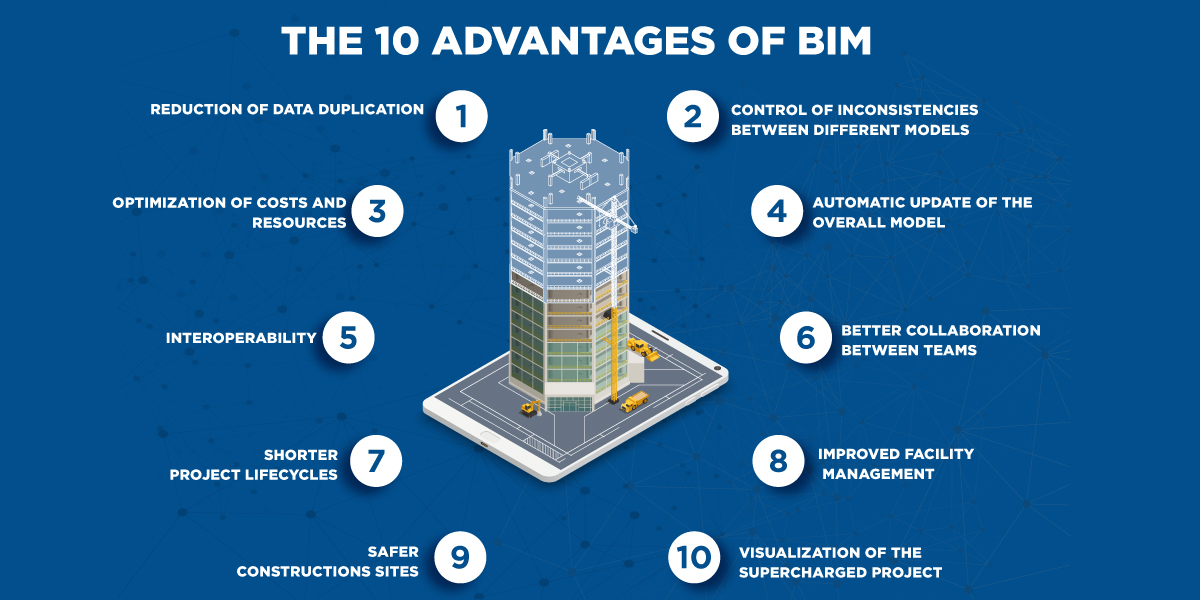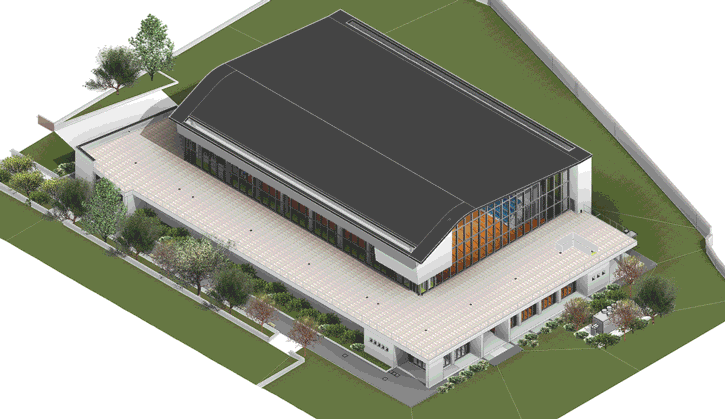Much more than a design tool
While it is true that BIM originated primarily as a design tool, in reality it is much more than it seems: BIM is an all-in-one project management solution that plans, designs, builds and operates – keeping everything documented.
The following 10 benefits of BIM show why builders and developers around the world are increasingly aiming to make the most of this valuable tool.
1. Reduction of data duplication
The data in the architectural project (geometries, materials, etc.) are used automatically by the structural and plant components of the project, avoiding errors and repetitions.
2. Control of inconsistencies between different models
By superimposing the three projects (architectural, structures and systems) in the same 3D model, any design errors that would be found only in the execution phase are immediately highlighted.
3. Optimization of costs and resources
By preventing these future problems, time, costs and environmental resources are reduced. When all team members are working in BIM, smart planning can save clients a lot of money.
4. Automatic update of the overall model
By operating directly on a view, the overall model is also updated. All the schedules referring to the overall model are also updated, including the metric calculation.
5. Interoperability
It means the collaboration that takes place between the different designers and between the different calculation software (structural, plant, energy, etc.) with the central BIM model.
6. Better collaboration between teams
BIM facilitates collaboration between the teams involved in the project, if they embrace the use of this technology, allowing them to always be up to date.
7. Shorter project lifecycles
BIM allows builders and developers to have much shorter project development periods. About 30% of the construction is made up of rework work, which usually results from poor planning. With little rework and lean design, projects are much more likely to finish on time, if not months earlier. This advantage of BIM also increases the return on investment: the faster the construction projects, the sooner they can be used.
8. Improved facility management:
BIM provides accurate and regularly updated information on the building during its entire life cycle. It works like a life and breath manual for facility managers. Regardless of the size or purpose of the structure, BIM can improve space management and simplify maintenance.
9. Safer construction sites
Due to heavy machinery and dangerous heights, construction sites can be dangerous work environments. However, BIM can intervene to protect the most valuable asset in the construction industry: human lives and health. Through excellent planning and risk analysis, project managers can mitigate the risks of accidents. Additionally, better communication reduces stress, allowing all workers and managers to enjoy better mental health
10. Visualization of the supercharged project
The use of BIM makes the design of the building more detailed and accurate. This can help maximize your location’s resources.
These benefits are so tangible that many countries – including Australia, Brazil, Czech Republic, Chile, Denmark, Finland, Japan, Kazakhstan, Latvia, Norway, Singapore, South Korea, UK, Ireland and Vietnam – have made it mandatory for any new publicly funded construction and infrastructure projects.
From January 2021, according to the Baratono Decree for tenders, all complex works with a value exceeding 15 million must be developed with the BIM method. From 2025, all works will have to be designed by this methodology.


